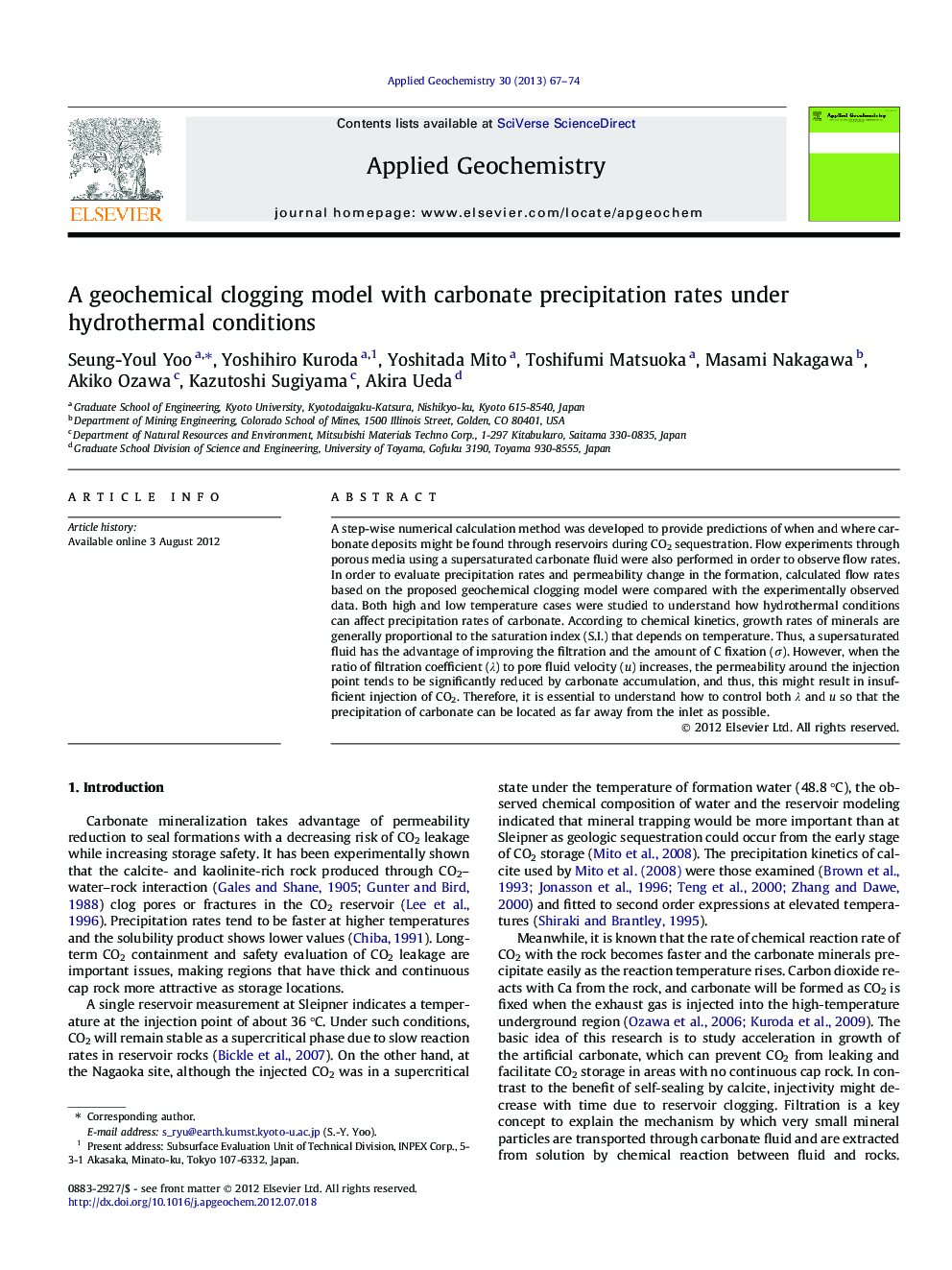| کد مقاله | کد نشریه | سال انتشار | مقاله انگلیسی | نسخه تمام متن |
|---|---|---|---|---|
| 4435967 | 1620261 | 2013 | 8 صفحه PDF | دانلود رایگان |

A step-wise numerical calculation method was developed to provide predictions of when and where carbonate deposits might be found through reservoirs during CO2 sequestration. Flow experiments through porous media using a supersaturated carbonate fluid were also performed in order to observe flow rates. In order to evaluate precipitation rates and permeability change in the formation, calculated flow rates based on the proposed geochemical clogging model were compared with the experimentally observed data. Both high and low temperature cases were studied to understand how hydrothermal conditions can affect precipitation rates of carbonate. According to chemical kinetics, growth rates of minerals are generally proportional to the saturation index (S.I.) that depends on temperature. Thus, a supersaturated fluid has the advantage of improving the filtration and the amount of C fixation (σ). However, when the ratio of filtration coefficient (λ) to pore fluid velocity (u) increases, the permeability around the injection point tends to be significantly reduced by carbonate accumulation, and thus, this might result in insufficient injection of CO2. Therefore, it is essential to understand how to control both λ and u so that the precipitation of carbonate can be located as far away from the inlet as possible.
► We propose a geochemical clogging model with filtration and advection for mineral trapping.
► Column tests were performed to evaluate precipitation rates and permeability in porous media.
► Filtration coefficient (λ) and fluid pore velocity (u) are applied to the numerical calculation.
► The smaller λ/u, the more uniform secondary mineral deposition.
► Controlling value of λ/u becomes the key parameter for sustainable CO2 fixation.
Journal: Applied Geochemistry - Volume 30, March 2013, Pages 67–74